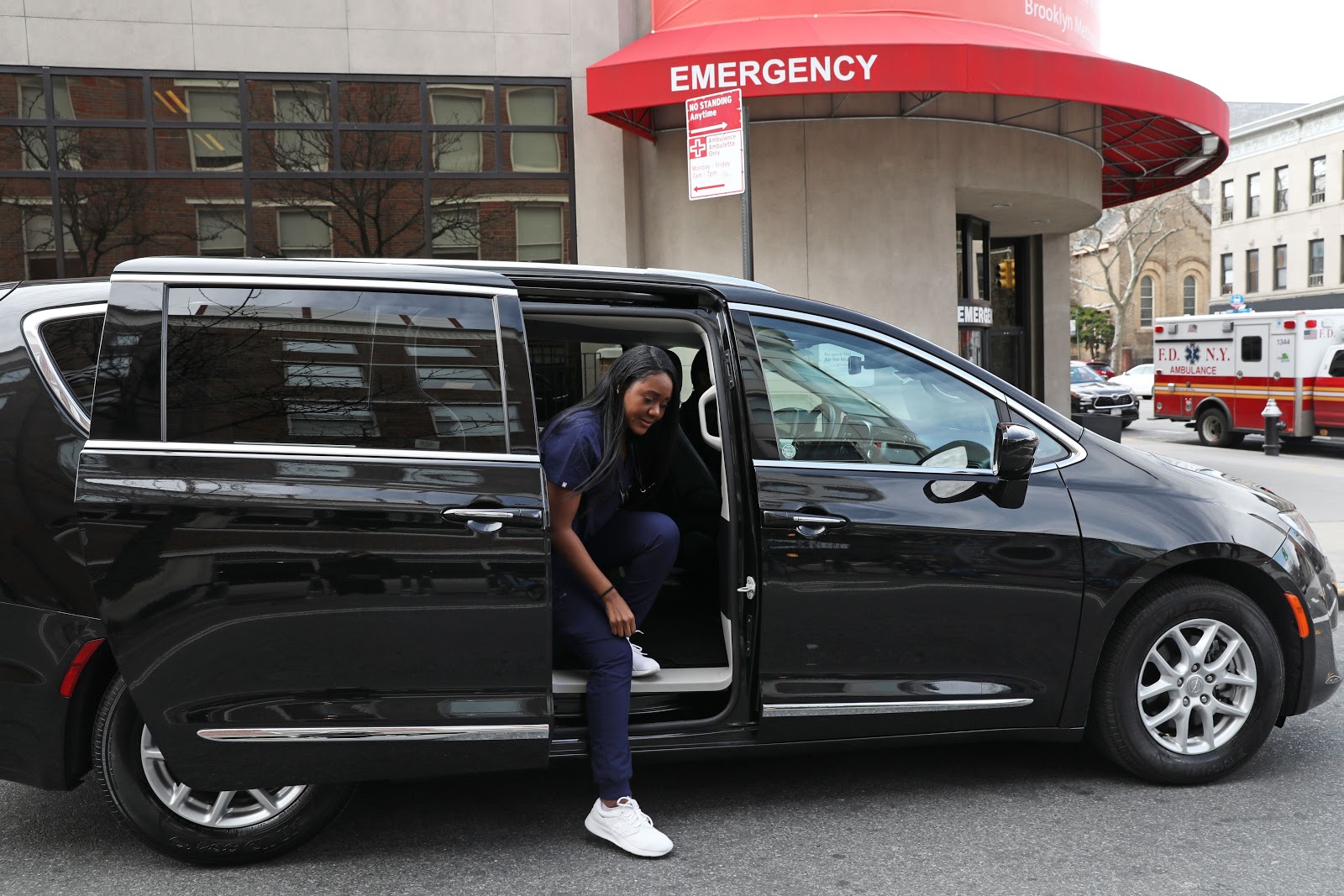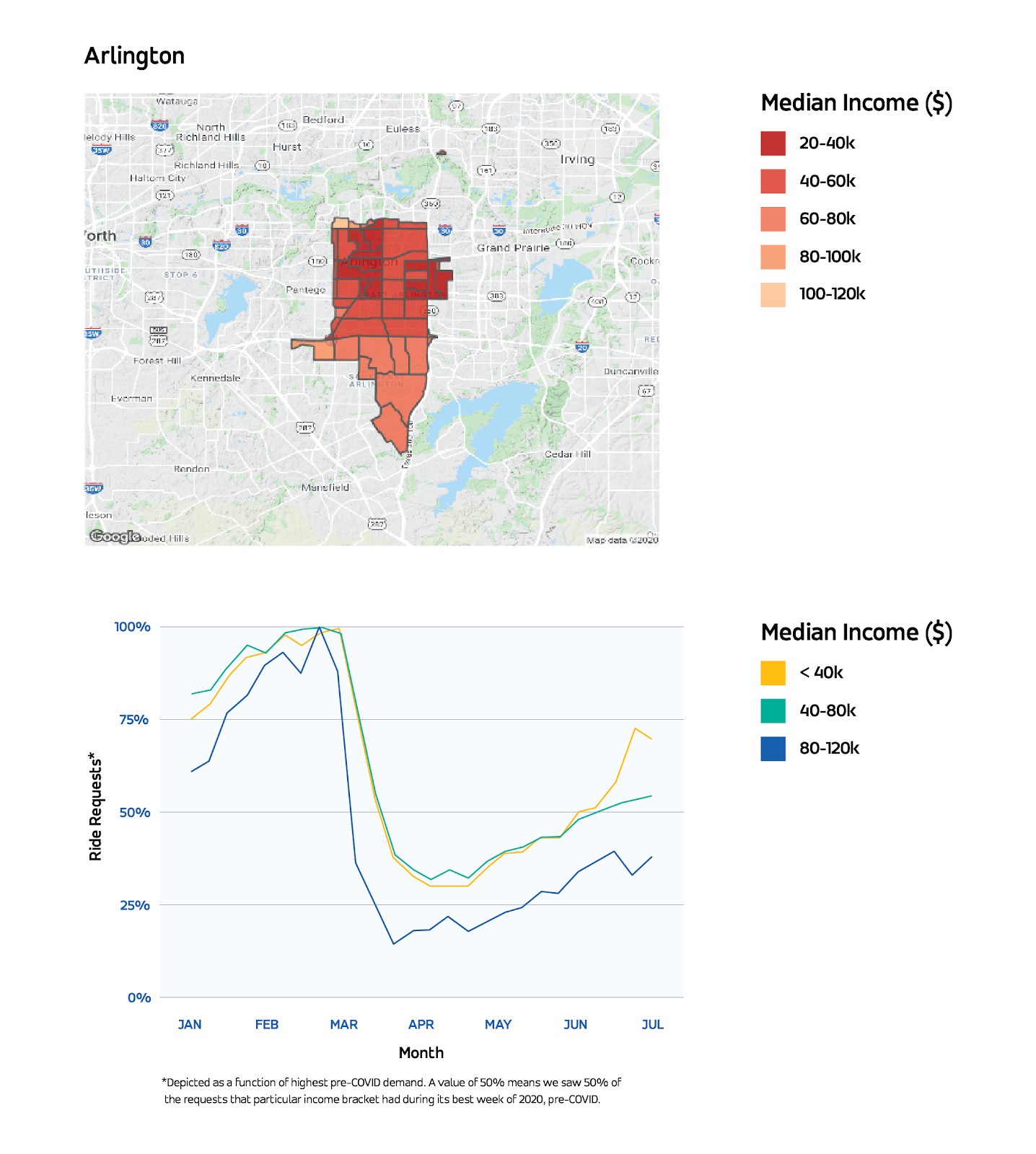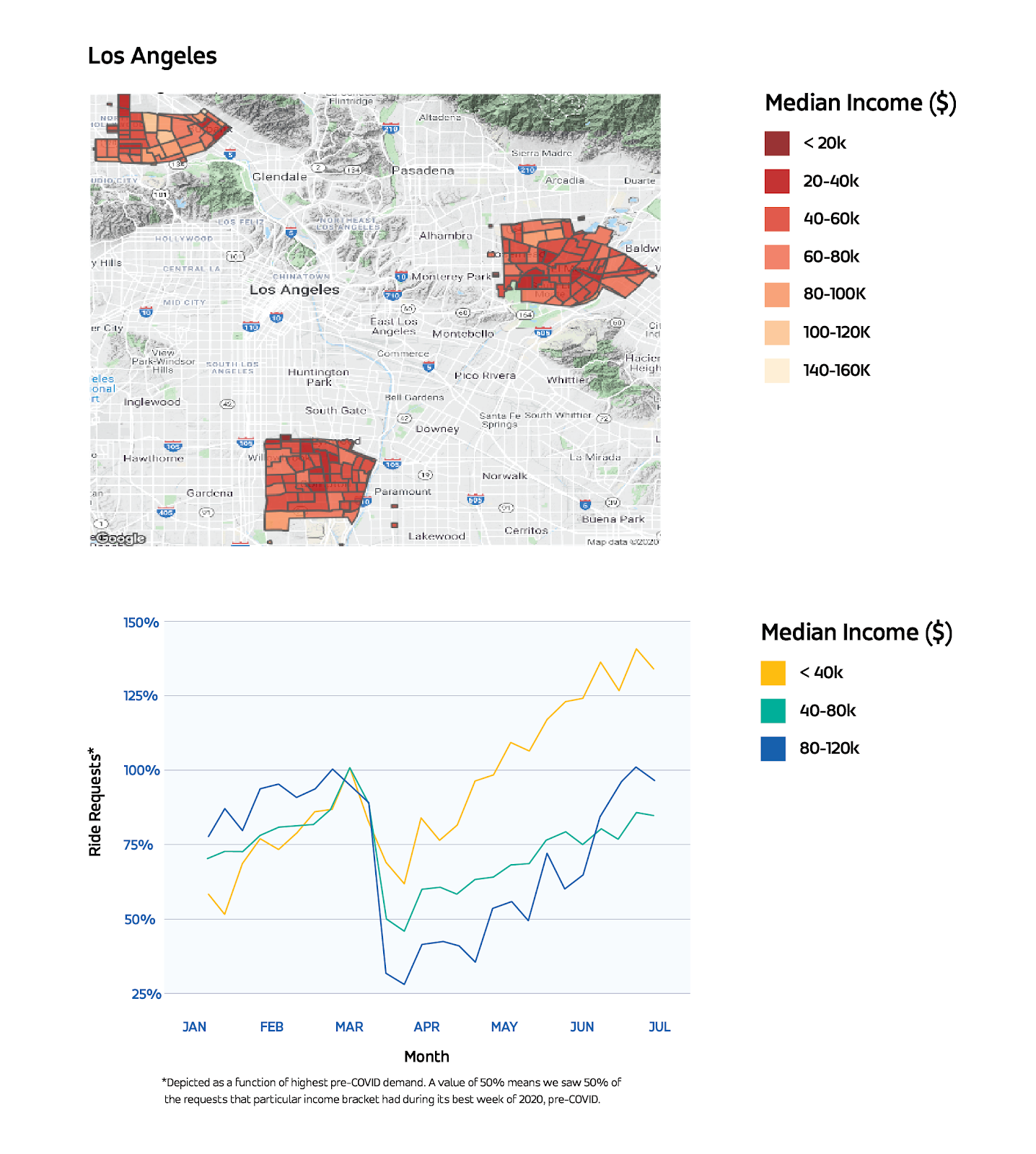The COVID-19 pandemic and the Black Lives Matter movement have brought much-needed attention to inequitable structures in our society, including how our transportation systems and cities have been designed. At Via, we're committed to doing our part to increase access to jobs, educational opportunities, grocery stores, health care, and other critical services. That's why we're working closely with cities to improve and expand public transit — especially for underserved communities. Everyone should be able to get where they need to go in their community.

Numerous transit agencies and cities across the country have turned to on-demand microtransit over the last couple of years to improve public transportation options, in particular for residents who can't afford to own a car and who have been systemically underserved by traditional transit networks.
COVID-19 has put into even sharper relief the huge wealth gap and racial disparity in our communities. When the pandemic hit, those in higher income brackets started working from home and using their personal vehicles for necessary travel. Meanwhile, millions of lower-income Americans, including a disproportionate number of people of color, don’t have either of these luxuries and have struggled to make ends meet. Many within marginalized communities serve as essential workers, relying on public transit to keep supermarket shelves stocked, provide care for children and seniors, and generally ensure society continues to function during these devastating times. “...dynamic, on-demand public transit has proven to be a mobility lifeline for those in low-income areas during this crisis.” Data shows that, in addition to serving specific community needs as a result of COVID-19 — such as food delivery to vulnerable populations and transporting hospital workers in the overnight hours — dynamic, on-demand public transit has proven to be a mobility lifeline for many during this crisis. How’d we find this out? We started by picking three of our partner cities that have launched on-demand public transit solutions: Arlington, one of our longest-running services; Jersey City, one of our newest; and Los Angeles, where we recently celebrated our one-year anniversary. Then, we analyzed how COVID-19’s impact on rider demand related to income levels throughout each city.
Jersey City On-Demand, Jersey City, New Jersey.
Let’s start with Jersey City, where our recently-launched on-demand microtransit service fills critical gaps in the existing public transit system by providing a much-needed mobility option to and from a centralized zone, which includes the Downtown area, as well as within the north and southwest sections of the city.

The line graph shows demand across the board peaking around early March and hitting a low later that month, mirroring trends throughout the transit industry. And yet, the rate of this decrease (i.e., the steepness of the line) for demand in areas averaging under $40K a year is less extreme than that of the $40K-$80K bracket and, even more markedly, than that of the brackets above $80K. It’s also clear that the <$40K group and the $40K-$80K group have experienced a steady recovery, turning back to microtransit, since early April.
Translation? Riders in lower-income areas were not nearly as quick to move away from microtransit during COVID-19 and, looking at data from early April onwards, they have come back to the on-demand service at a stable rate.
Via Arlington, Arlington, Texas.
Next up, we have Arlington, Texas. In Arlington, we entirely replaced a single-route bus service with shared, dynamically-routed, on-demand rides servicing much of the city.

Our line graph shows a consistently higher relative demand among the <$40K and $40K-$80K brackets compared to the $80K-$120K bracket. We also see the same trend of lower-income areas experiencing a far slower rate of decline during the pandemic than higher-income areas. All of this to say: another point on the equitable mobility scoreboard for on-demand transit.
Arlington will be a particularly fascinating case to keep a close eye on in the coming months, given that this on-demand service comprises the city’s entire public transit system.
Via, Los Angeles, California.
Finally, let’s take a look at Los Angeles and our on-demand shared transit service implemented in partnership with the Los Angeles County Metropolitan Transit Authority (LA Metro) to provide first-and-last mile service to and from Metro stations in North Hollywood, El Monte, and Compton.

As expected, all income levels saw steep drops in demand immediately after COVID-19 hit. The rebounds we’ve seen for the $40K-$80K and $80K and up brackets have been impressive, with both rising to about 75% of their pre-COVID peak by late May, and the latter group matching its highest demand of 2020 the following month. But, take a look at the <$40K group. Wildly surpassing all expectations, this segment achieved its highest ridership for all of 2020 in June — around 140% of its pre-COVID peak — and demand is continuing to grow.
You might also notice that, in addition to that remarkable recovery, demand for the <$40K group in LA only dropped a marginal amount after COVID-19 hit. We believe this is largely due to key changes LA Metro and Via made to the service, including 1) an extension in service hours that coincided with the beginning of the pandemic, 2) a transition from offering first-and-last mile to end-to-end trips and, 3) adding essential locations, such as hospitals, to areas of service, in response to the crisis.
So, what does this all mean? That the service is functioning exactly as LA intended. LA Metro’s on-demand network is acting as a lifeline for riders who still need reliable transit during this time, especially for lower-income residents.
Riding into the future — with everyone onboard.
The data we’ve gathered from these three US partner cities suggests that microtransit has been a vital public resource for lower-income communities during the coronavirus pandemic. Looking ahead, the long-term socioeconomic reverberations of COVID-19 mean that affordable, convenient public transportation will remain absolutely critical.
Like many businesses hard hit by the pandemic, transit agencies across the country are facing crippling budgetary constraints. But now is the time for cities to meet a twenty-first century challenge with a twenty-first century solution. Microtransit and on-demand technology can help draw riders back to public transit. Further, by integrating on-demand options into existing public transit infrastructure, municipalities across the country can better serve their communities and foster economic mobility for all.




